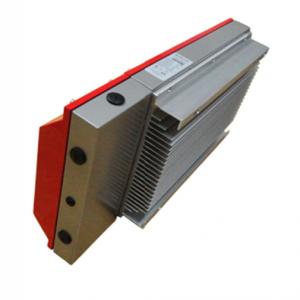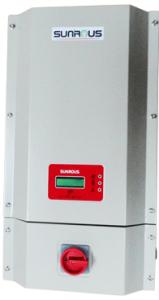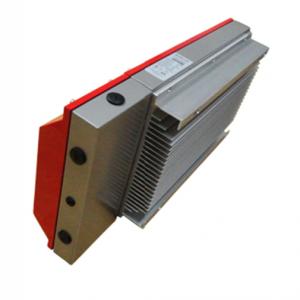PV Grid-Tied Inverter-Sunrous-Dual MPPT-US Maintenance-Free Operation
- Loading Port:
- Shanghai
- Payment Terms:
- TT or LC
- Min Order Qty:
- 100 mm
- Supply Capability:
- 1000 mm/month
OKorder Service Pledge
OKorder Financial Service
You Might Also Like
1.Features of PV Grid-Tied Inverter-Sunrous-Dual MPPT-US Maintenance-Free Operation :
• Maintenance-Free Operation
Absorbent Glass Mat (AGM) technology ensures efficient gas recombination up to 99% and freedom from electrolyte maintenance. During the expected float service life of batteries, no need to check the specific gravity of the electrolyte or add water.
• Good Discharging Ability
Tight assembly technology ensures an excellent high-rate discharge performance.
• Long Service Life
A unique corrosion-resistant grid alloy ensures batteries have long service life.
• Low Self Discharge
Using high purity raw materials ensures batteries have less self-discharge.
2. PV Grid-Tied Inverter-Sunrous-Dual MPPT-US Maintenance-Free Operation Images

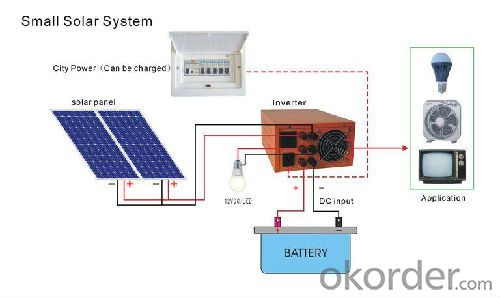
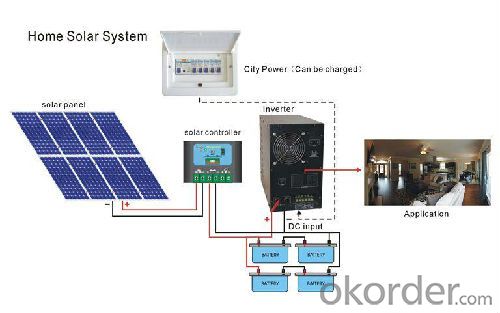
3. PV Grid-Tied Inverter-Sunrous-Dual MPPT-US Maintenance-Free Operation Specification
GT3.6-ZX-01/HF | |
Input(DC) | |
Max.DC Power | 3600W |
Max.DC Voltage | 500V |
PV Voltage range, MPPT | 60V ~ 360V |
Max.input current | 30.0A |
Number of MPP trackers | 2 |
Max.number of strings (parallel) | 4 |
Output(AC) | |
Nominal AC power / | 3600W/3600W |
Max AC power | |
Max.output current | 16.0A |
Nominal AC Voltage / range | 180V~264V |
AC grid frequency / range | 47.5-51.5Hz / 59.3-60.5Hz |
Power factor at rated power | 1 |
THD | < 3% |
AC connection | Single-phase |
Efficiency | |
Max. efficiency/Californian efficiency | > 98.0% / > 97.0% |
MPP adaptation efficiency | > 99.0% |
Protection devices | |
DC reverse polarity protection | √ |
AC short-circuit protection | √ |
Ground fault monitoring | √ |
Grid monitoring | √ |
Output Transient Voltage Suppression | √ |
Over load | √ |
Anti-islanding | √ |
General data | |
Dimensions (W/ H / D) in mm | 370 / 540 / 185 mm |
Weight | 23kg |
Operating temperature range | -25 ~ +60℃ |
Storage temperature range | -40 ~ +70℃ |
Ambient humidity | 0 ~ 100% |
Consumption (night) | < 0.5W |
Topology | HF-transformer galvanic isolation |
Cooling concept | Convection |
Enclosure type | IP65 / NEMA 3R |
Features | |
DC connection: PV special connector | √ |
AC connection: connector | √ |
LCD display & Backlit | √ |
LED display | √ |
Interfaces: RS485 | √ |
Warranty: 10 years | √ |
Certificates & approvals | G83 / G59 / TUV / SAA / ETL / JET/ CE |
4. After-sales Services Undertakings
1. During the equipment commissioning period, the company will send scheduler to commissioning to ensure debugging smoothly and a one-time test commissioning.
2. The company is responsible for professional users’ on-site operator training and technical exchange.
3. The long-term tracking service system: we practice lifelong quality of our product tracking service, and we also will take effective measures and solutions for the user of the technical issues and equipment problems.
4. Regularly listen to opinions and suggestions of users, to provide users with new trends in technological innovation, new product information and enhance mutual understanding.
5. Any problems, the company will provide solutions for users within 48 hours.
5. FAQ
Where can I buy your products?
You could find our products from dealers or contact our sales team directly. We will provide you with detailed services.
How to contact us?
Contact details can be found from website www.okorder.com to contact us. We look forward to providing you with professional services.
What is the application field of your products?
They can be used in the small photovoltaic (PV) grid power generation systems of family units as well as the commercial photovoltaic system such as BIPV, BAPV and etc.
What kinds of modules do your inventers support?
Our inventers support most of mainstream components and modules in the market. Should you require more details, please do not hesitate to contact our technical personnel.
- Q:Can a solar inverter be used with a net metering system?
- Yes, a solar inverter can be used with a net metering system. In fact, a solar inverter is a crucial component of a net metering system. It helps convert the direct current (DC) electricity produced by the solar panels into alternating current (AC) electricity that can be used to power homes or businesses. The excess electricity generated by the solar panels is then fed back into the grid through the net meter, allowing consumers to receive credits or compensation for the surplus energy they produce.
- Q:How does a solar inverter handle voltage drops in the electrical wiring?
- A solar inverter handles voltage drops in the electrical wiring by continuously monitoring the voltage levels and adjusting its output accordingly. It maintains a stable output voltage by boosting it when necessary to compensate for any drop in the wiring. This ensures that the solar power system operates efficiently and effectively, minimizing any potential power loss due to voltage drops.
- Q:What is the role of a solar inverter in power factor correction?
- The role of a solar inverter in power factor correction is to convert the direct current (DC) generated by the solar panels into alternating current (AC) that can be used by the electrical grid. In doing so, the solar inverter ensures that the AC power being fed into the grid has a power factor close to unity, which means it is efficient and does not cause any unnecessary strain on the electrical system. This helps to improve the overall power quality and efficiency of the solar energy system.
- Q:What is the role of a display or user interface in a solar inverter?
- The role of a display or user interface in a solar inverter is to provide a means for users to monitor and interact with the inverter's functionalities and data. It allows users to view real-time information about the solar power generation, system status, and any potential issues or errors. Furthermore, the user interface enables users to adjust settings, configure preferences, and troubleshoot problems if needed. Overall, the display or user interface enhances the usability and control of the solar inverter for users.
- Q:Can a solar inverter be used without solar panels?
- No, a solar inverter cannot be used without solar panels. The purpose of a solar inverter is to convert the direct current (DC) generated by solar panels into alternating current (AC) that can be used to power electrical devices in a home or building. Without solar panels producing DC electricity, there would be no input for the inverter to convert.
- Q:How does a solar inverter handle reverse power flow?
- A solar inverter handles reverse power flow by automatically adjusting its operation to convert and redirect excess electricity produced by the solar panels back into the grid. This process ensures efficient utilization of electricity and prevents any potential damage or overload to the solar system.
- Q:Can a solar inverter be used for commercial-scale solar installations?
- Yes, a solar inverter can be used for commercial-scale solar installations. Solar inverters are essential components of any solar PV system, converting the DC electricity generated by solar panels into AC electricity suitable for commercial use. They are available in various sizes and capacities, allowing them to accommodate the power requirements of large-scale commercial installations. Additionally, advanced features like grid-tie functionality and monitoring capabilities make solar inverters suitable for integration into commercial-scale solar installations.
- Q:What is the maximum operating temperature of a solar inverter?
- The maximum operating temperature of a solar inverter typically ranges between 40 to 50 degrees Celsius, depending on the specific model and manufacturer.
- Q:Can a solar inverter be used with different types of grid support functions?
- Yes, a solar inverter can be used with different types of grid support functions. Solar inverters are designed to convert the direct current (DC) produced by solar panels into alternating current (AC) that can be fed into the electrical grid. They can be configured to provide various grid support functions such as reactive power control, voltage and frequency regulation, and anti-islanding protection. These functions allow solar inverters to actively support the stability and reliability of the grid, regardless of the specific requirements of the grid system.
- Q:Can a solar inverter be used in remote areas without access to the grid?
- Yes, a solar inverter can be used in remote areas without access to the grid. Solar inverters are designed to convert the DC power generated by solar panels into AC power that can be used to run electrical appliances. In remote areas, where there is no grid connection, solar inverters can be used in off-grid or standalone systems to provide electricity for various purposes, such as lighting, charging batteries, or powering small appliances. These systems typically include solar panels, batteries for energy storage, and the solar inverter to convert the stored energy into usable AC power.
1. Manufacturer Overview |
|
|---|---|
| Location | |
| Year Established | |
| Annual Output Value | |
| Main Markets | |
| Company Certifications | |
2. Manufacturer Certificates |
|
|---|---|
| a) Certification Name | |
| Range | |
| Reference | |
| Validity Period | |
3. Manufacturer Capability |
|
|---|---|
| a)Trade Capacity | |
| Nearest Port | |
| Export Percentage | |
| No.of Employees in Trade Department | |
| Language Spoken: | |
| b)Factory Information | |
| Factory Size: | |
| No. of Production Lines | |
| Contract Manufacturing | |
| Product Price Range | |
Send your message to us
PV Grid-Tied Inverter-Sunrous-Dual MPPT-US Maintenance-Free Operation
- Loading Port:
- Shanghai
- Payment Terms:
- TT or LC
- Min Order Qty:
- 100 mm
- Supply Capability:
- 1000 mm/month
OKorder Service Pledge
OKorder Financial Service
Similar products
New products
Hot products
Hot Searches
Related keywords
